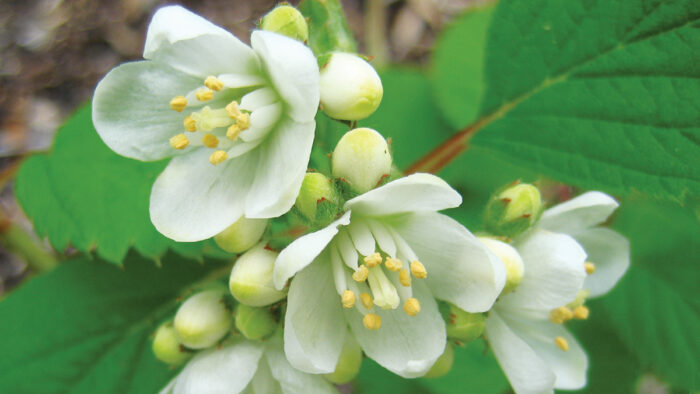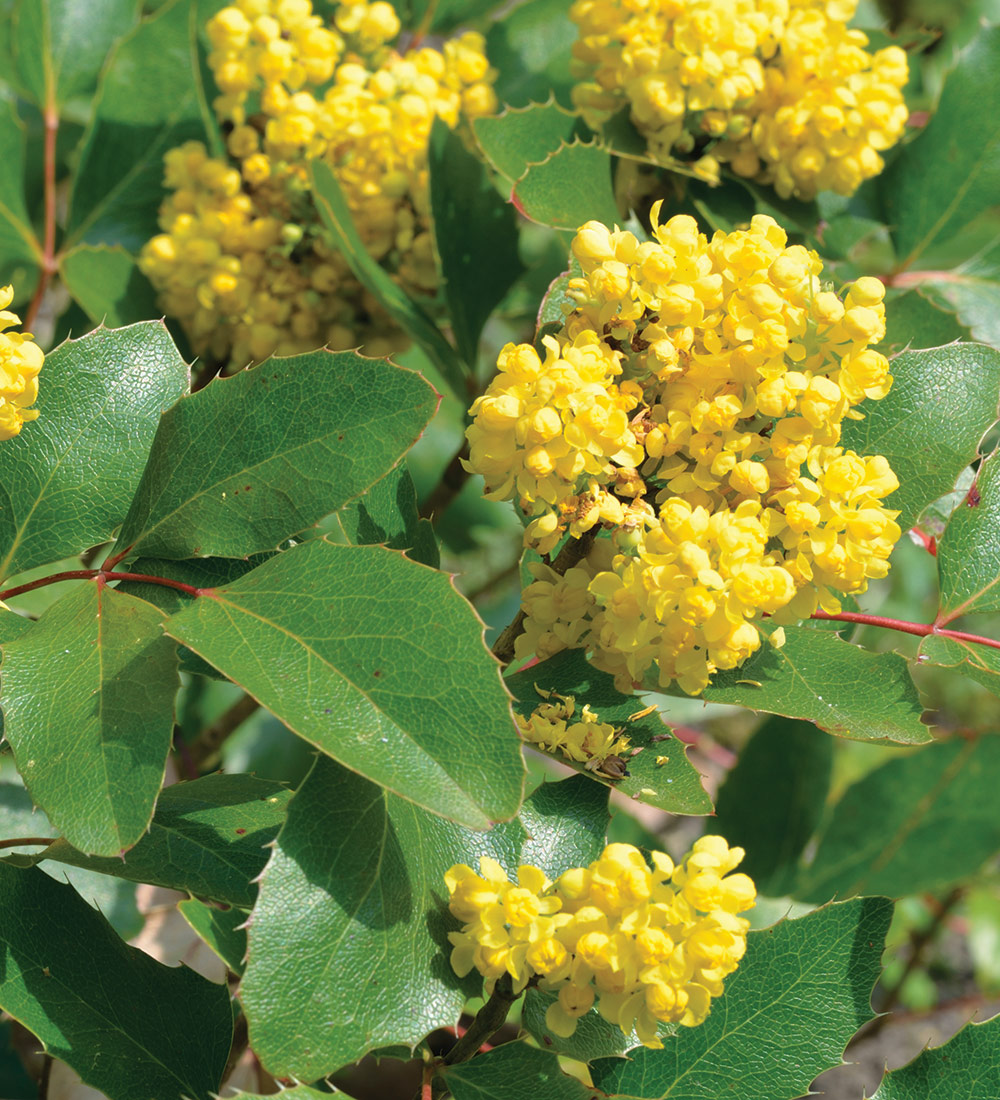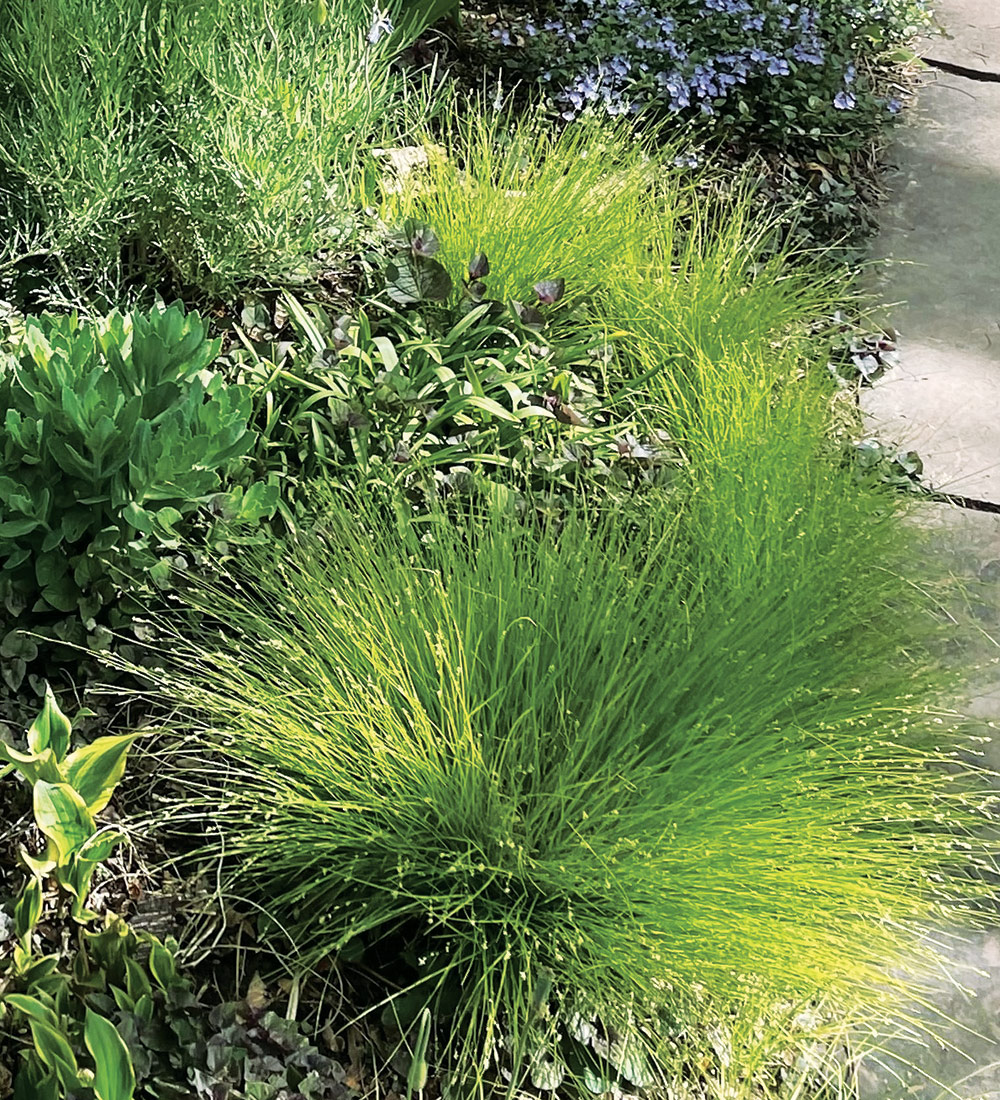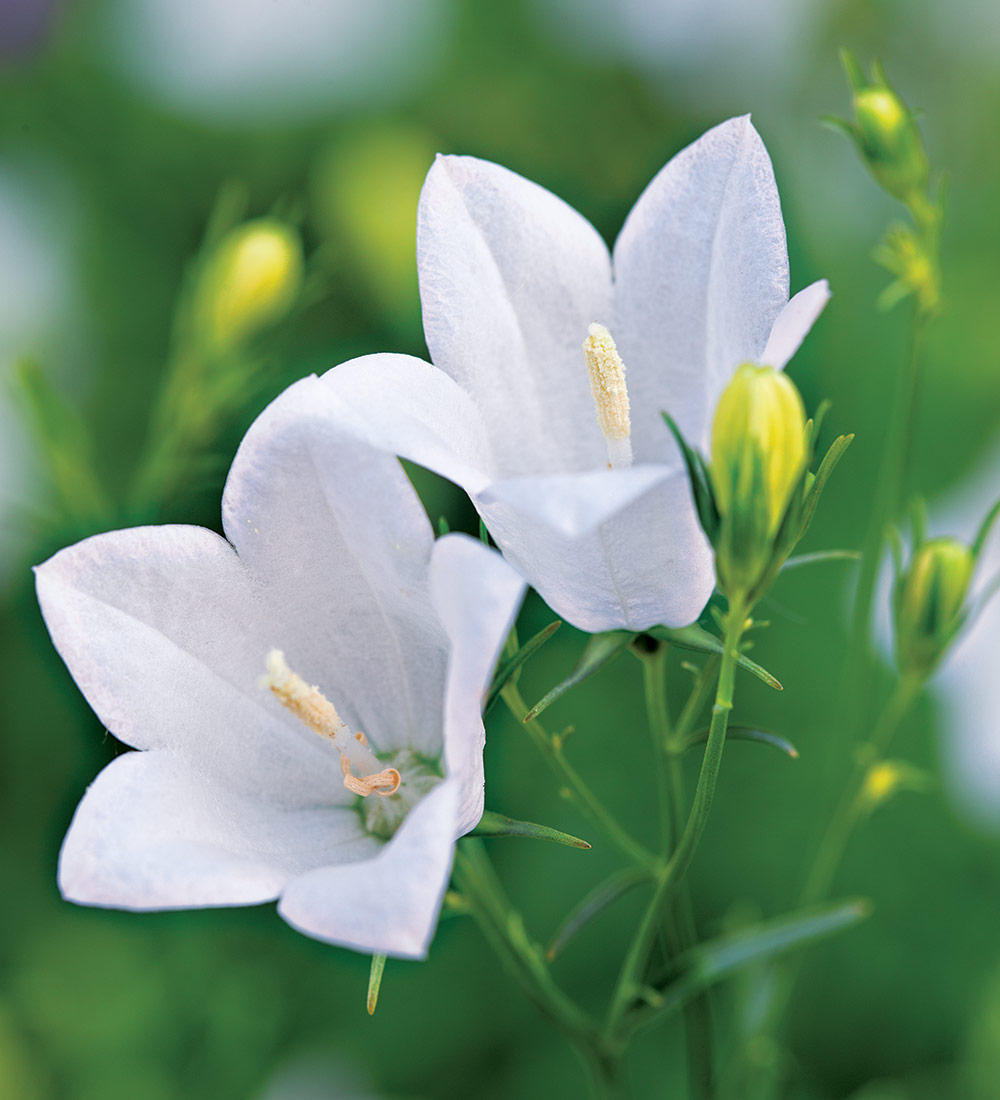
1. Creeping Oregon Grape

Name: Mahonia repens syn. Berberis repens
Zones: 5–8
Size: 1 to 2 feet tall and 3 to 4 feet wide
Conditions: Full sun to full shade; average to moist, well-drained soil
Native range: Western North America
With attractive, serrated leaves that persist and change to red-purple through winter, creeping Oregon grape is a lasting, durable option as a weed-smothering understory shrub. It will spread, forming colonies over time, and so should not be sited in fuss-prone, densely planted garden beds. A handsome workhorse in lower-maintenance spaces, this shrub welcomes spring with clusters of fragrant, golden flowers. These are followed by juicylooking, blue-purple berries that are edible (but sour) and enjoyed by wildlife. Creeping Oregon grape grows conservatively at first, spreading with more vigor as it matures. While it can grow in full sun, it may sometimes exhibit leaf burn in especially hot or cold areas.
2. Five Petal Cliffbush

Name: Jamesia americana
Zones: 3–8
Size: 3 to 6 feet tall and wide
Conditions: Full sun to partial shade; average, well-drained soil
Native range: Central-west and southwestern United States
A hardy and fairly petite hydrangea relative that is native to the mountains of the western United States, five petal cliffbush is an uncommon shrub in gardens. Slow growing, it will remain smaller in the fringes of its zonal range, where heat or drought slows its growth, although it can gain substantial presence in locations where it finds conditions more amenable. Either way, it produces a respectable show of white, five-petaled flowers in late spring and follows with attractive, fuzzy, deeply rugose leaves held in pairs. In addition to its interesting summer leaf texture, the species turns a brilliant orange-red in fall. It grows well in sandy, loamy, or gravelly soil.
3. Appalachian Sedge

Name: Carex appalachica
Zones: 3–8
Size: 6 to 12 inches tall and wide
Conditions: Full sun to full shade; dry to moist, well-drained soil
Native range: Eastern North America
Few plants have demonstrated such durability and adaptability as this elegant, understated sedge. With a penchant for movement in even a slight breeze, Appalachian sedge forms a bright green, arching tuft of foliage. And unlike many Carex species, it is well-behaved, growing slowly into clumps and never running, although it will self-seed lightly where conditions are favorable. If sited in full sun, it needs regular irrigation, but it’s quite tolerant of dry soil in shadier sites. This plant has become a staple for my shade gardens, where its graceful, cheery foliage brightens dark pathway edges, all while suppressing weeds and stabilizing soil.
4. ‘White Gem’ Harebell

Name: Campanula rotundifolia ‘White Gem’
Zones: 3–8
Size: 8 to 12 inches tall and wide
Conditions: Full sun to partial shade; dry to moist, well-drained soil
Native range: Eurasia, North America
Harebell is an interesting plant. It’s native to many temperate parts of the northern hemisphere and is quite adaptable in gardens. It also forms two different shapes of leaves: round leaves at the plant’s base and slender, elongated leaves on flower stems. ‘White Gem’ is an easy-to-grow cultivar with bright white flowers. It blooms more vigorously the more sun it receives, although it requires more irrigation in full sun. When ‘White Gem’ is placed in a shady site, the flowers brighten designs and stand out easily in the shadows. This plant grows well in most soil textures and looks great next to Appalachian sedge.
Bryan Fischer lives and gardens in Fort Collins, Colorado. The curator of plant collections for a local botanic garden, he is also a regional reporter for FineGardening.com.


















Comments
Log in or create an account to post a comment.
Sign up Log in